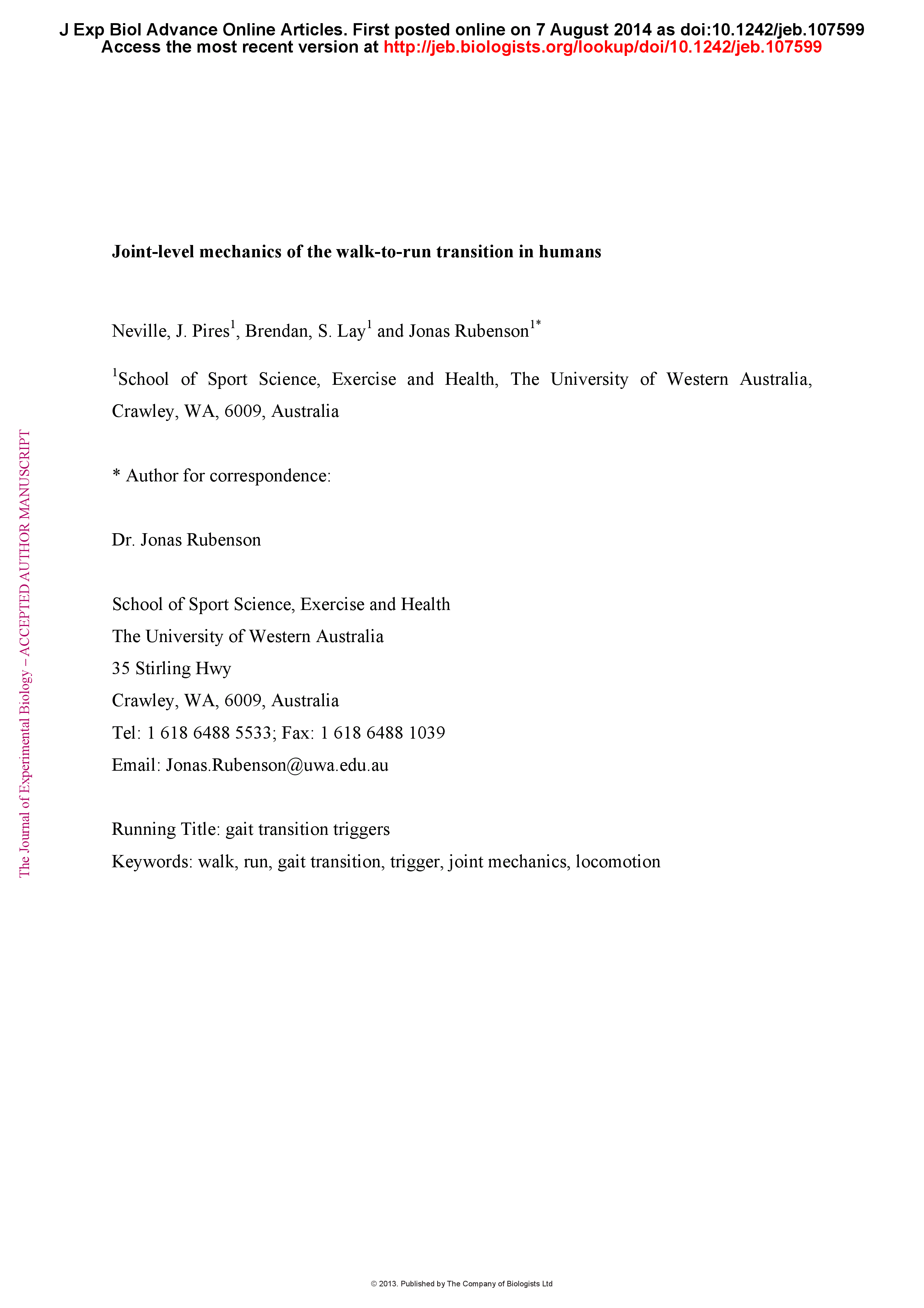Abstract
Two commonly proposed mechanical explanations for the WRT include the prevention of muscular over-exertion (effort) and the minimisation of peak musculoskeletal loads and thus injury risk. The purpose of this study was to address these hypotheses at a joint level by analysing the effect of speed on discrete lower-limb joint kinetic parameters in humans across a wide range of walking and running speeds including walking above and running below the WRT speed. Joint work, peak instantaneous joint power, and peak joint moments in the sagittal and frontal plane of the ankle, knee and hip from 8 participants were collected for 10 walking speeds (30–120% of their WRT) and 10 running speeds (80–170% of their WRT) on a force-plate instrumented treadmill. Of the parameters analysed, three satisfied our statistical criteria of the ‘effort-load’ hypothesis of the WRT. Mechanical parameters that provide an acute signal (peak moment and peak power) were more strongly associated with the gait transition than parameters that reflect the mechanical function across a portion of the stride. We found that both the ankle (peak instantaneous joint power during swing) and hip mechanics (peak instantaneous joint power and peak joint moments in stance) can influence the transition from walking to running in human locomotion and may represent a cascade of mechanical events beginning at the ankle and leading to an unfavourable compensation at the hip. Both the ankle and hip mechanisms may contribute to gait transition by lowering the muscular effort of running compared to walking at the WRT speed. Although few of the examined joint variables satisfied our hypothesis of the WRT, most showed a general marked increase when switching from walking to running across all speeds where both walking and running are possible, highlighting the fundamental differences in the mechanics of walking and running. While not eliciting the WRT per se, these variables may initiate the transition between stable walking and running patterns. Those variables that were invariant of gait were predominantly found in the swing phase.








